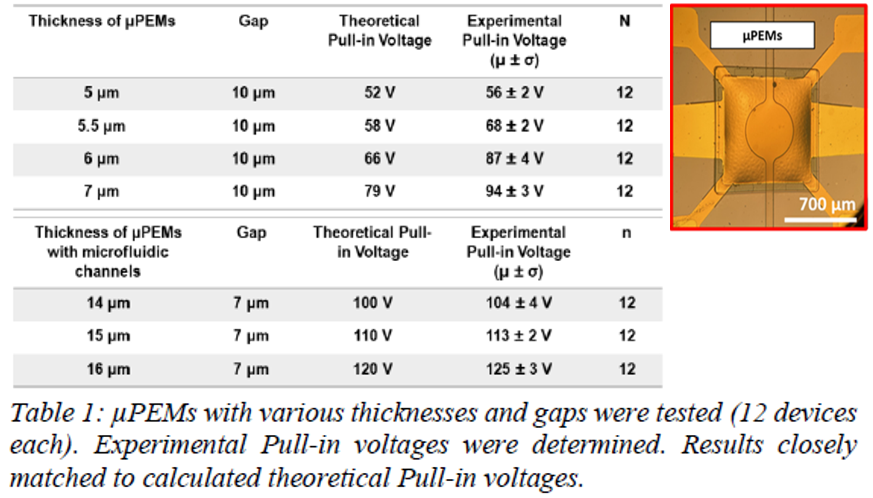
Invention Summary:
Microsystem platforms for System-On-A-Chip devices often require the integration of multiple microfluidic functions, such as pumping and actuation components. Pneumatic actuation is commonly used due to the ease of fabrication with soft-lithography techniques. However, these methods do not provide complete actuation control for precise reproducibility and require off-chip pneumatic connections, resulting in loss of integration capabilities.
Rutgers researchers have developed a novel MEMS-micromachined Parylene-based electroactive membrane(s) (µPEMs) with an embedded microfluidic channels system. The system comprises a freely supported Parylene-membrane composite with electrostatic actuation capabilities, the system includes sandwiched electrodes, for electrostatic actuation, and embedded microfluidic channels on top of the membrane composite running across the system and ending in fluidic reservoirs on each side. The system includes a ground electrode patterned at the bottom of the recess under the actuatable membrane composite, comprising an air gap between the working electrodes (membrane composite and ground electrode). The system is fabricated utilizing a multilayer Parylene micromachining approach, including deposition, and patterning processes.
Market Applications:
- Micro-fabrication for life science research
- Electrostatic actuation to promote flow circulation for micromixing and cell sorting applications
- Mechanical stimulation of cells for Organ-On-Chip technologies
- MEMS technologies
- Ink-Jet Printing
Advantages:
- Compared to other actuators (e.g., piezoelectric actuators), this system can be easily integrated into a lab-on-a-chip device
- Efficient actuation as the µPEMs are integrated in the device during fabrication.
Intellectual Property & Development Status:
Patent pending. Available for licensing and/or research collaboration.